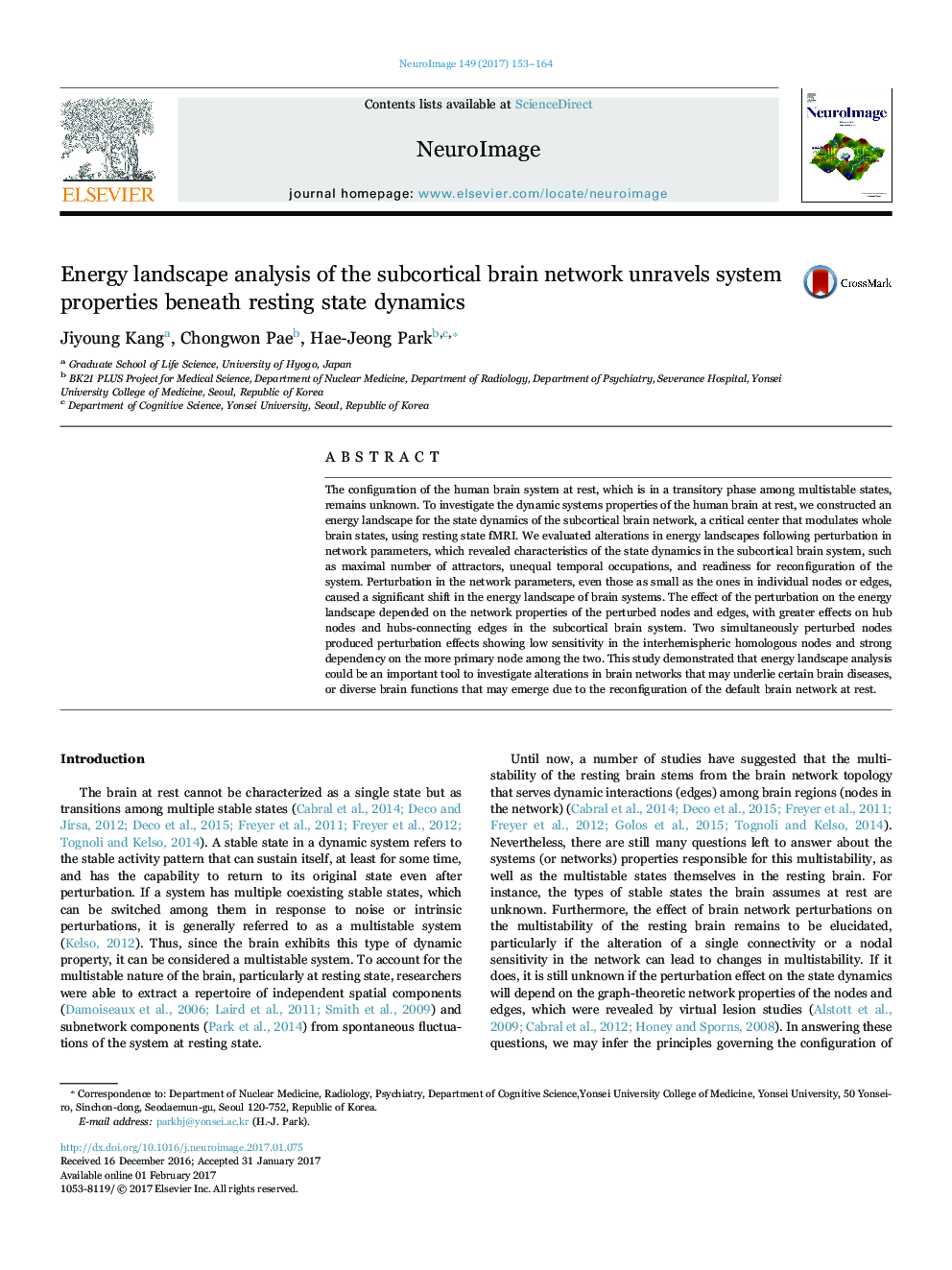| Article ID | Journal | Published Year | Pages | File Type |
|---|---|---|---|---|
| 5631241 | NeuroImage | 2017 | 12 Pages |
Abstract
The configuration of the human brain system at rest, which is in a transitory phase among multistable states, remains unknown. To investigate the dynamic systems properties of the human brain at rest, we constructed an energy landscape for the state dynamics of the subcortical brain network, a critical center that modulates whole brain states, using resting state fMRI. We evaluated alterations in energy landscapes following perturbation in network parameters, which revealed characteristics of the state dynamics in the subcortical brain system, such as maximal number of attractors, unequal temporal occupations, and readiness for reconfiguration of the system. Perturbation in the network parameters, even those as small as the ones in individual nodes or edges, caused a significant shift in the energy landscape of brain systems. The effect of the perturbation on the energy landscape depended on the network properties of the perturbed nodes and edges, with greater effects on hub nodes and hubs-connecting edges in the subcortical brain system. Two simultaneously perturbed nodes produced perturbation effects showing low sensitivity in the interhemispheric homologous nodes and strong dependency on the more primary node among the two. This study demonstrated that energy landscape analysis could be an important tool to investigate alterations in brain networks that may underlie certain brain diseases, or diverse brain functions that may emerge due to the reconfiguration of the default brain network at rest.
Related Topics
Life Sciences
Neuroscience
Cognitive Neuroscience
Authors
Jiyoung Kang, Chongwon Pae, Hae-Jeong Park,
